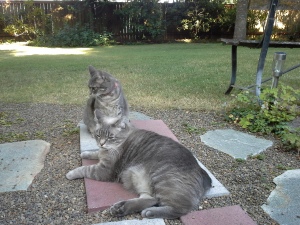When you start writing scenes for your novel, you’re liable to hear the advice, “Start in the middle of the action.” The fancy term is in media res–borrowed no doubt from some lawyer. Just kidding–in Latin it means “start in the middle of things.” But whatever you call it, starting in the middle of the action is solid advice.
Writing Tip for Today: Why should you begin a scene in the middle of the action and how do you do it?
Too Much Warm-up Kills Tension
In real life, we often go through a series of niceties when we meet others. We ask about the weather and make small talk. But in fiction, this kind of thing just kills off the tension you hope to build. The need-to-know things as you set your scene are: Who’s on stage with your POV character, where and when they’re at and that’s about it. The purpose of your scene is to have your POV character at cross-purposes with others. They all want the same slice of pie. It won’t matter to your reader if it’s pumpkin or lemon meringue. The tension will build only as they battle for the same slice. So whereas in life we might want to know the ingredients of the pie, in fiction we only care that someone will win or lose. If you bore your reader with an ingredients list or other kinds of “warm-up” background info, you risk losing your reader before you get the main problem onstage.
Wine Glass Alert!
A good example of how to determine where in the scene you begin is the old “wine glass tipping” illustration. A woman in white satin orders a glass of red wine. As the server brings the wine glass on a tray, he stumbles and the wine glass tips. As you imagine the red wine arcing out of the glass toward the white satin, it’s easier to see that it’s not until JUST BEFORE the wine hits the dress that we engage with the action. Up til then, the woman might jump out of the way or the server could regain control. When the conflict (you should hear the blue streak uttered by the woman!) is certain, it’s time to yell, “Action!” Doing so lets us get a glimpse of the “status quo” without boring us with a long drawn-out sequence in which very little happens. Readers will want to know the outcome based on the action rather than information.
BE Your Character
A lot of us must tell ourselves the story before we can show it. Descriptions, narratives and even working in exposition (you did all that research!) are typical ways we “warm up” our scenes. Another way we “tell” the story is by way of the POV character reminiscing or thinking. While you may understand the emotions surrounding the thought-about events, your readers hear only a surface version. Add that to the way a “sitting and thinking” scene is largely static and you have a recipe for readers bowing out. Instead of having readers observe your character, help them BE the character. By beginning your scenes closer to the place where the good stuff occurs, you tap into the character’s deeper emotions and convey them in a raw form that appeals to readers’ “gut reactions.” In media res can help you get to the heart of not only the action and the tension, but closer to the heart itself.






Linda, I’ll highlight this on the Christian Poets & Writers blog – http://christianpoetsandwriters.blogspot.com. God bless you and your family.